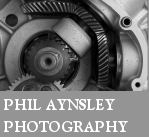


Grandjean y Marcel Bourquin ganaron muchas competencias con sus motos de carrera con motor Villiers Brooklands 172cc. Allegro logra los campeonatos suizos en 175 cm3 de 1925 a 1929, superando los 60 récords y logrando 70 victorias en carreras nacionales y trepadas de colina, con una destacada actuación en el GP de Europa en Ginebra en 1928, donde cuatro de sus 175 cc finalizan a más de 90 km/h.
La fabricación comenzó en 1923 con un Villiers 147 cc,, en 1925 agregaron los Villiers 172, 247 y 342 cc. y en 1931 incorporan los modelos con motores Sturmey Archer SV y OHV de 350 y 500 cc., mientras que en carreras utilizan un Moser 100 cc. El rango de modelos no cambia entre 1936 y 1939, excepto que el modelo de 500 OHV recibió un motor MAG suizo. Al igual que las bicicletas, las motos Allegro eran de buena calidad y los motores propietarios eran "tuneados" en la fábrica de Neuchatel.
En 1932 Allegro compra la marca Moser de St. Aubin. Después de 1945 solo construyeron hasta fines de los años cincuenta motocicletas pequeñas de 49 a 198 cc.
Lo realmente curioso de Allegro es que Grandjean construye una moto “racer” de 344 cc que tenía dos motores Villiers Brooklands acoplados en tándem, siendo ésta la única moto de producción en presentarse con dos unidades motrices. La historia sugiere que la moto fue finalizada en 1928/29 y el mismo Arnold Grandjean la condujo en las carreras.
Un ejemplar con motor en tándem suele participar en la famosa reunión de Coupes Moto Légende en Dijon, aunque no sé cuantas unidades en total se construyeron..
The son of a watchmaker, Arnold Grandjean was born in the Sagne region of Switzerland in 1890. He became a famous cyclist having won the Swiss championship four times. He and his four brothers, all competitive riders, founded a bicycle factory in 1914 and in 1923 together with Marcel Bourquin they began producing motorcycles, the first using a 147cc Villiers engine, and in 1925 they added 172, 247 and 342 cc machines, some powered by the new Villiers Brooklands engines. Initially they were built in Place del la Gare, Fleurier, and later in the larger town of Neuchatel.
Grandjean and Marcel Bourquin won many competitions with 172cc Villiers-powered machines. Allegro won the 175 class of the Swiss championships from 1925 to 1929, with over 60 records and 70 wins in national road races and hillclimbs, and an outstanding performance in the European Grand Prix in Geneva in 1928. Arnold's brother Tell also raced Allegro motorcycles, and with his wife swinging, sidecars. They won many races.
Allegro built a most unusual 344cc motorcycle powered by a pair of 172cc Villiers Brooklands engines mounted in tandem, with the rear engine sitting somewhat higher than the other. At the track, unsurprisingly it was the only twin- engined motorcycle present. It is believed the machine was raced in 1928-1929 by Arnold Grandjean but it is not known whether the bike was a one-off or went into limited production.
An example of this machine is seen fairly regularly at Coupes Moto Légende meeting in Dijon.
The 1931 season saw the addition of models with Sturmey-Archer SV and OHV engines of 350 to 500 cc, and smaller machines with Moser 100 cc twostrokes. In 1932 Allegro acquired Moser of St. Aubin.
The catalogue remained unchanged between 1936 and 1939 with the exception of the 500 model which received a Swiss MAG OHV engine.
Their bicycles were mostly top of the line racing bikes. Allegro motorcycles were of similar quality, with the proprietry engines often further tuned at the Neuchatel factory. Bicycles remained of primary importance to the the company, with as many as 20,000 per year leaving the factory; in 1939 they were the largest bicycle company in Switzerland.
Between 1945 until the late 1950s they built small motorcycles of 198cc, and in the 1960s mostly 49cc mopeds.
Allegro merged with Mondial in the 1980s.
Several of the brothers' sons became motorcyclists. Jacques Grandjean, son of Jules, participated in the Euro and World Championships in the 1980s.
Allegro Models include:
1923 1¼ hp 147cc 70 km/h
1926 1¾ hp 172 cc Turismo 70 km/h
1926 1¾ hp 172 cc Supersport 100 km/h
1925-29 Villiers 3½ hp 342cc, 79x70mm.
1928 350cc Tandem Twin, Two-stroke
A restored 1926 model has a Sturmey Archer gearbox, Bosch lighting, Brampton forks and a Terry saddle.
Sources: Sergio Scalerandi, Henshaw, et al.
If you have further information about these classic Swiss machines, please contact us